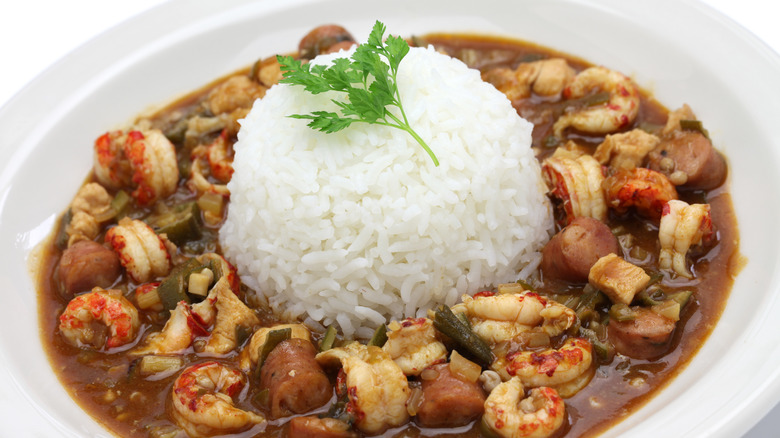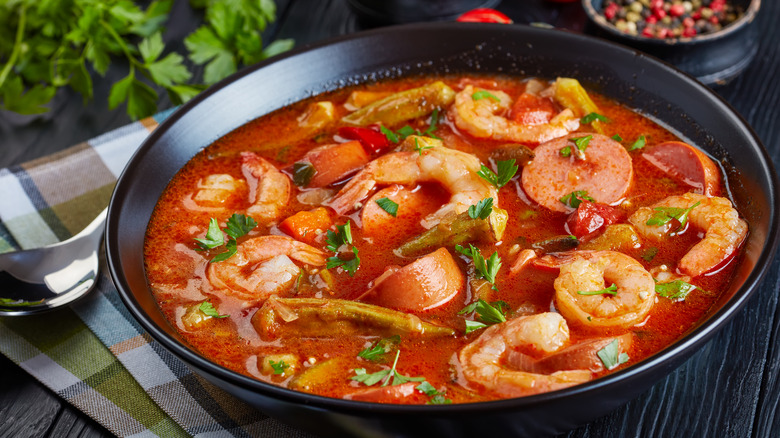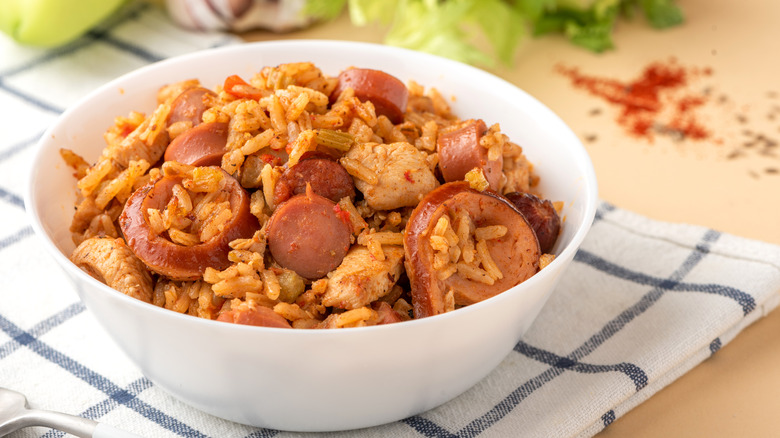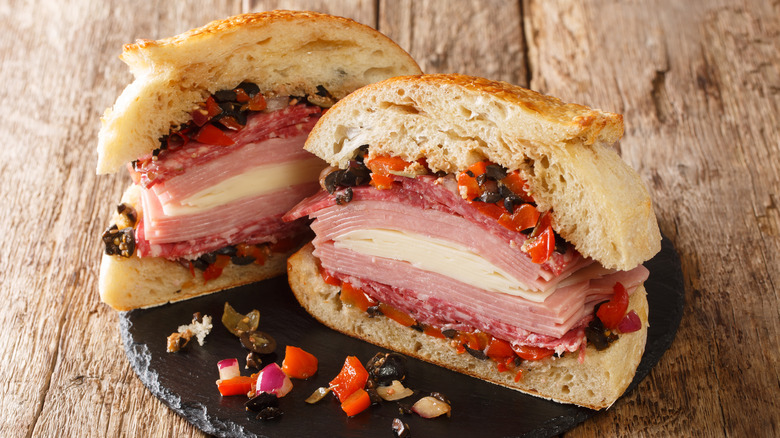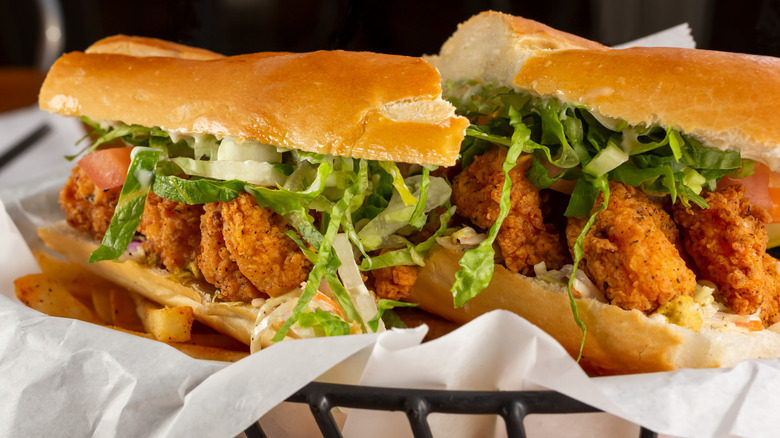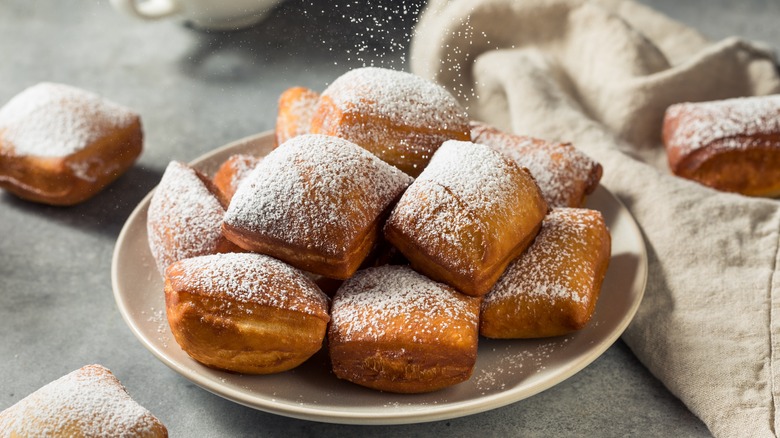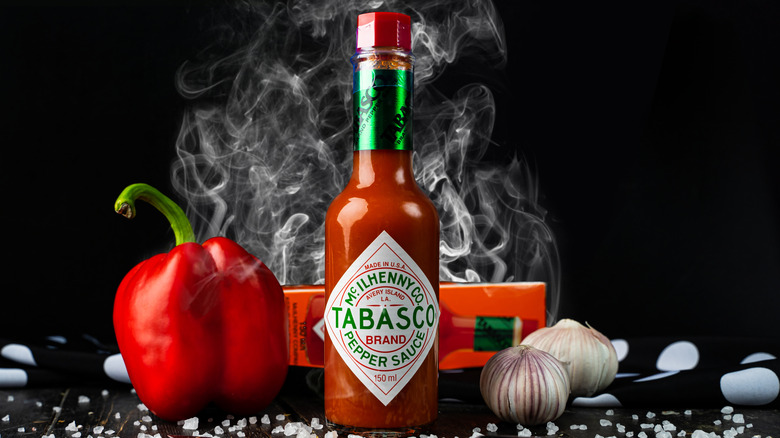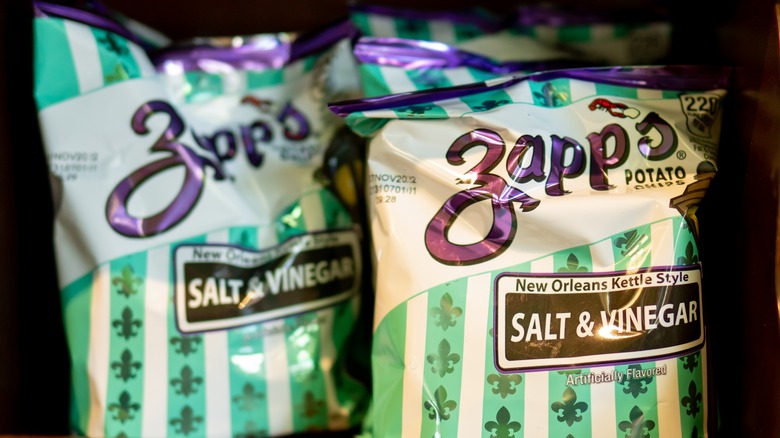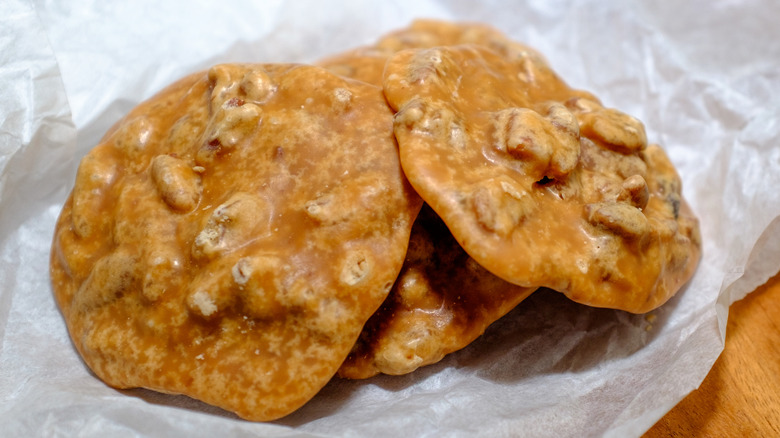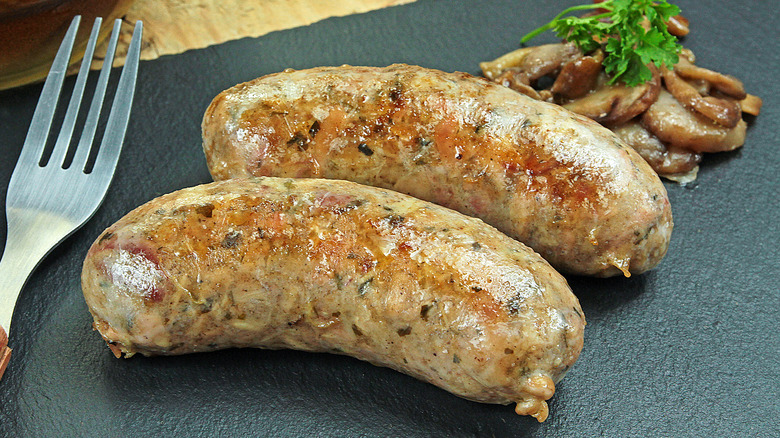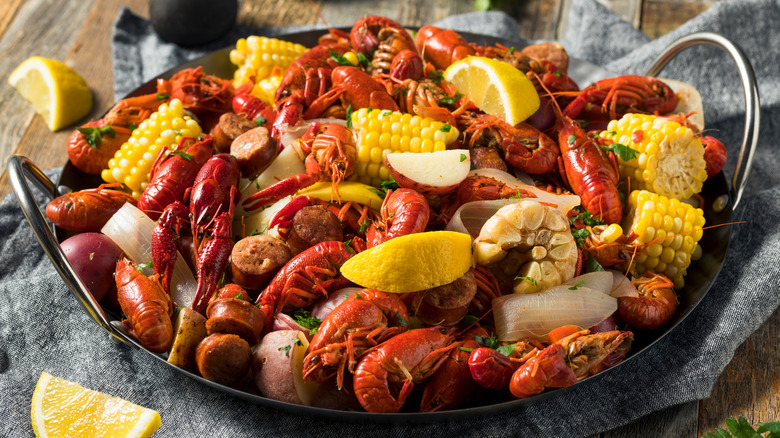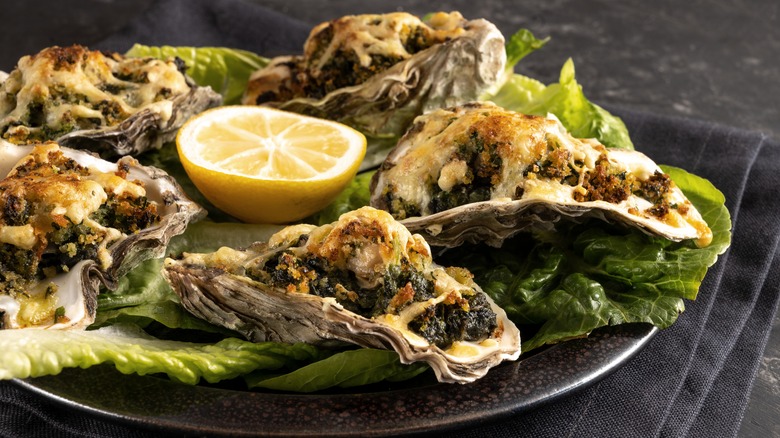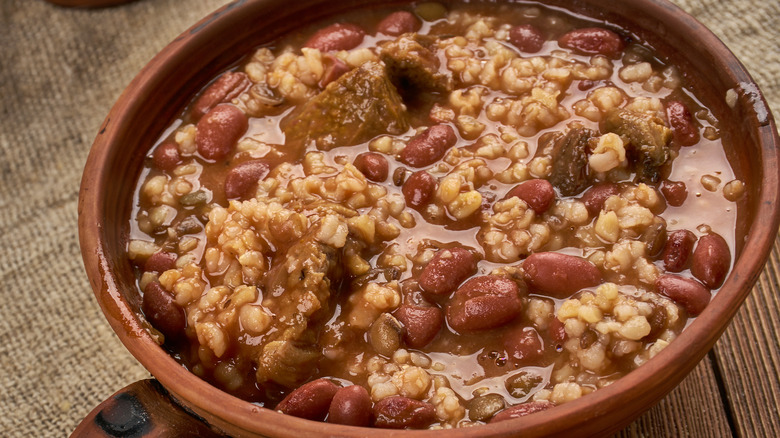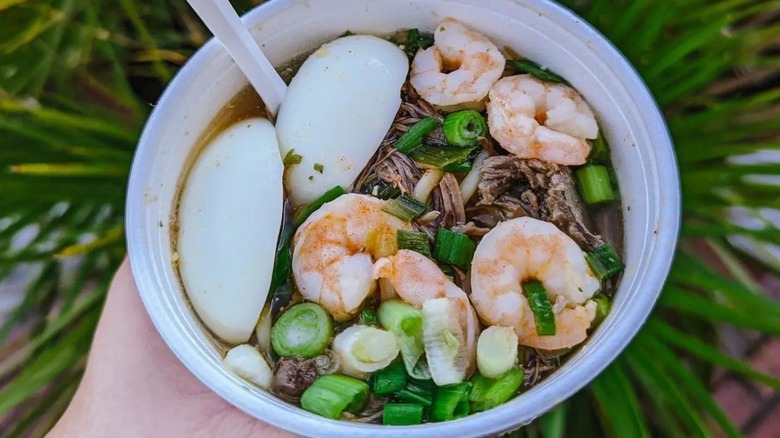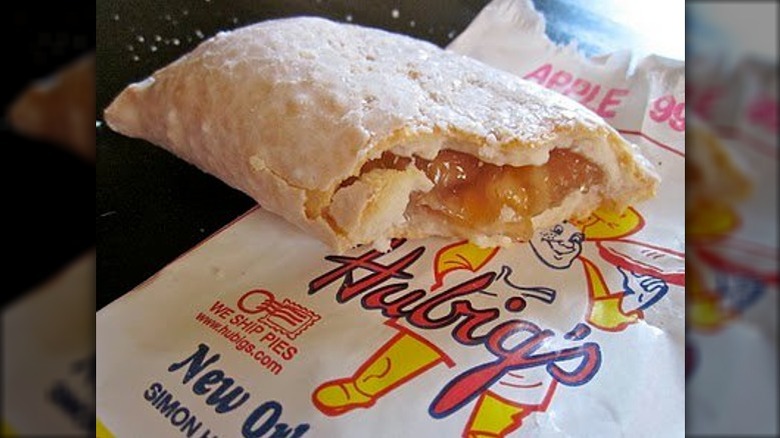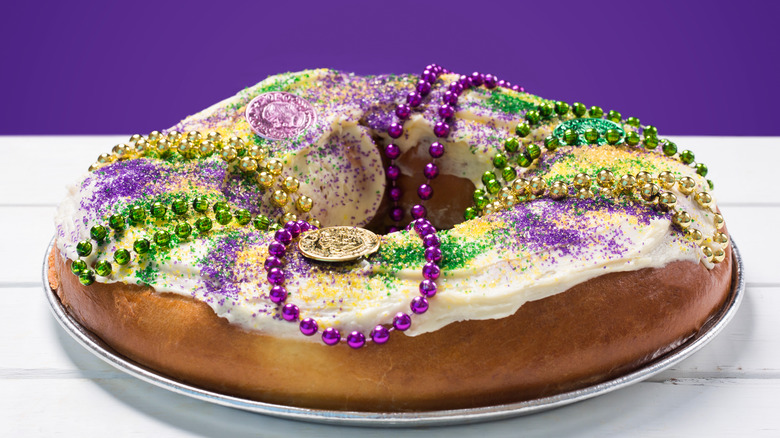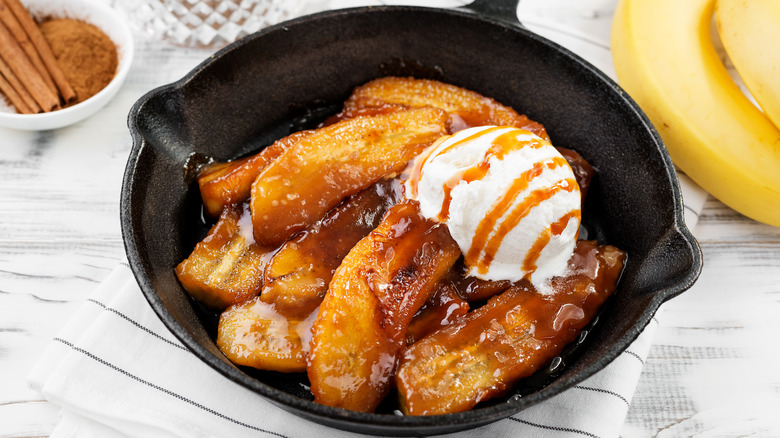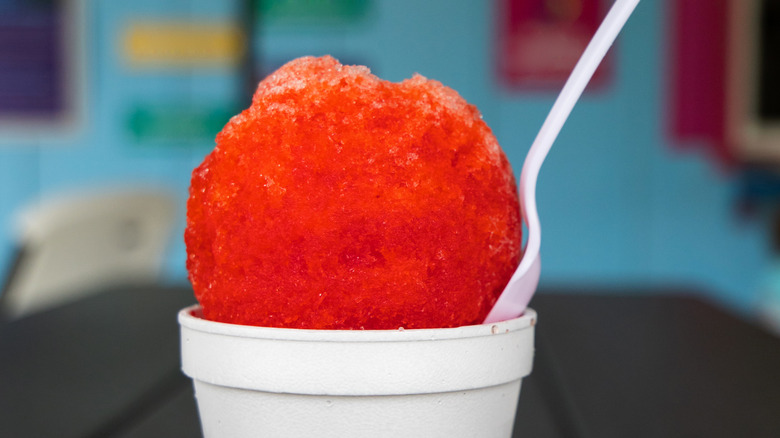18 Classic New Orleans Foods You Need To Try Before You Die
There is no doubt that New Orleans, Louisiana is a multicultural city. Founded as La Nouvelle-Orléans in 1718 by the French, the city became Nueva Orleans in 1723 when France gave the region to Spain. It became French again for 3 years starting in 1800 before being sold to the United States of America. New Orleans was a unique addition to the new country with different blends of architecture, language, religion, and culture. Naturally, being an important port city opened the Crescent City up to a world of influence as well.
When people think of New Orleans, the word "creole" probably comes to mind. Broadly speaking, creole is a blend of European and often African ancestries. This extends to people and the food they make. In New Orleans, creole has a strong French connection from when the city was a French outpost.
People may also connect the word "cajun" with New Orleans, another cultural group with a widely popular foodscape. The ancestors of Cajun people were Acadians who fled French Canada when the British acquired the territories in the early 1700s. While they largely settled in the countryside, New Orleans still feels their influence, especially in many of its seafood dishes.
Whether creole, cajun, European, or American, everything on this list is pure New Orleans. Bon appétit!
Gumbo
It may come as little surprise that gumbo is the official state cuisine of Louisiana. The word gumbo comes from a West African word for okra, which is sometimes, but definitely not always, an ingredient in gumbo. Some speculate that gumbo is a direct descendant of West African okra stews.
Because recipes for gumbo are so varied, almost anything goes. There are two main types, however, which comes down to the thickener. Some gumbos use okra as a thickener while others use a roux made with filé, a powder made from ground sassafras that likely came from the local Choctaw. Some gumbo recipes call for both ingredients.
Beyond that, any mixture of meat can be added, such as seafood or chicken and sausage. Chopped vegetables are also used, though adding tomatoes is a controversial subject. Although this hasn't always been the case, nowadays gumbo is almost always served over or alongside a mound of rice.
Jambalaya
Jambalaya is a New Orleans favorite one-pot dish that spans both creole and cajun cultures, both of which use meat, onion, celery, bell pepper, rice, and a variety of herbs and spices. However, there are some differences. Creole jambalaya likely includes tomatoes, and the cajun variety uses game meat quite a bit. The order in which the ingredients are added can also differ.
Like gumbo, jambalaya also likely has roots in West Africa in the form of jollof rice. Ghanaian Chef Kiko said in Civil Eats, "I read a lot of recipes on jambalaya and I've done jollof so many times. They are one and the same." The ingredients differ because they use local ingredients. In Ghana, for example, goat is a common ingredient in jollof rice. In Louisiana, seafood is frequently used.
Jambalaya also bears a strong resemblance to the Spanish dish paella, another one-pot meat and rice dish, which makes sense given New Orleans' Spanish history.
Muffaletta
After Sicily was conquered and absorbed into Italy in 1861, Sicilians began to immigrate to the United States in droves. Around the turn of the 20th century, Sicilian workers in New Orleans were buying loaves of muffoletta bread, slices of meat and cheese, and a salad made from green and black olives and onions to have for their lunches.
The owner of the French Quarter's Central Grocery, Lupo Salvatore, was the first to create a sandwich from these ingredients and sell them in his store in 1906. He is also credited for misspelling the bread as "muffaletta," which the sandwich is known by today, and created his own recipe for the olive salad. He had such success with his creation that other nearby grocers copied it and sold muffalettas in their stores as well.
Now, muffalettas are enjoyed beyond the Sicilian community, a beloved piece of the New Orleans foodscape.
Po-boy
Another iconic Crescent City sandwich is the po-boy. According to The Times-Picayune, the poor boy, which has been shortened to po-boy, was invented in 1929 by Benny and Clovis Martin. The brothers claimed they created the sandwich to feed striking streetcar drivers, but this may only be a legend. The New Orleans States published in 1933 that the brothers sold "sandwiches of half a loaf of French bread generously filled with whatever one desired, from roast beef to oysters," beginning before the strike of 1929.
Whatever the history, po-boys are quintessentially New Orleans. A po-boy traditionally contains meat, pickles, lettuce, tomatoes, and mayonnaise, but really anything goes, including hamburger patties and sausages.
The Martin Brothers' Coffee Stand and Restaurant closed in 1972, but thankfully the po-boy tradition has been carried on by countless other sandwich makers, including the bakery that originated the 35-inch French loaf used by the Martins for their sandwiches, Gendusa Bakery.
Beignets
What trip to New Orleans would be complete without a plate of pillowy beignets piled high with snowy powdered sugar? The Cafe du Monde in the French Quarter is probably the most famous establishment serving beignets with cafe au laits 24 hours a day, but you can find the fried pastries just about anywhere that serves breakfast.
Elsewhere in the world, a beignet may be a yeasted pastry very similar to a jelly doughnut. But in New Orleans, a beignet is made from choux pastry, which puffs when fried due to its high moisture content, and is square rather than round. Beignets were brought to Louisiana in the 1700s by Acadians who migrated from French Canada after the British took over. As we previously mentioned, the descendants of the Acadians are today called Cajuns.
In 1986, Louisiana declared the beignet to be the official state doughnut. One taste, and you'll completely understand.
Tabasco sauce
There probably aren't too many people consuming Tabasco sauce on its own, but a great many of us use it on almost any dish to give the flavor an extra kick. Mark Robichaux called Tabasco a "staple" in his Cajun household, alongside salt and pepper, in the Wall Street Journal.
The story of Tabasco sauce goes back to the Civil War, which ruined the plantation of a banker named Edmund McIlhenny. McIlhenny later started a business making and selling condiments made from Mexican Tabasco peppers that he had planted from seeds he'd allegedly obtained from a Confederate soldier.
Or maybe it happened differently. Another plantation owner Maunsel White was known to have grown Tabasco peppers and used them to flavor various homemade sauces in 1849, 20 years before McIlhenny. The News Orleans Daily Delta (per WSJ) published that Tabasco was "a new species of red pepper, which Colonel White has introduced into this country."
It was, however, McIlhenny who made the sauce famous, and his descendants still operate out of Angel Island, the name of the original plantation, over 150 years later. Unfortunately, Sierra reported that Angel Island is threatened by climate change. While the seeds are still harvested at Angel Island, they are sent overseas to grow into plants to ensure a sufficient harvest.
Zapp's potato chips
Zapp's potato chips had a rocky start. When Ron Zappe's businesses supplying machines to oil producers failed in the 1980s after the price of oil fell, he turned to a different industry – snack food. He dropped the "e" from his name and created his first specially seasoned kettle-cooked potato chips, Zapp's Cajun Crawtators. Zappe's obituary declared that these were the first potato chips to use Cajun spices in the United States.
Other distinctly Louisianian Zapp's flavors include Cajun Dill Gatortator, Bourbon Street Smokey Sweet, Evil Eye, and fan favorite Voodoo. Legend claims that Voodoo's creation was an accident, the result of a worker spilling five seasonings together and liking the result.
Although Ron Zappe passed away in 2010 while battling throat cancer, his incredible legacy lives on. Zapp's chips are some of the highest-selling potato chips in Louisiana and Texas. Although they are not widely sold outside of the southern U.S., you can order them online from parent company Utz. If you prefer pretzels over potato chips, you can order those, too, in both Voodoo and Jazzy Honey Mustard.
Pralines
Pralines are a delicious sugary treat made with nuts. In France, where pralines originated, they are typically made with almonds. But in the southern U.S., pecans are more readily available. Chanda Nunez wrote in her thesis "Just like Ole' Mammy used to Make: Reinterpreting New Orleans African-American Praline Vendors as Entrepreneurs," that in addition to the pecan substitution, African-Americans "added large amounts of Louisiana sugar as well as milk to thicken the candy."
Many speculate that the original pralines recipe was brought to New Orleans by French Ursuline nuns, who educated girls in domestic duties such as cooking. When the girls grew up and married, they took this recipe for pecan pralines with them to their new homes, thus spreading the confection throughout the South.
Women who sold pecan pralines in the streets of New Orleans in the 1800s were called pralinères. It is through their hard work and shrewd business acumen that pralines have become New Orleans' signature candy.
Andouille
Unsurprisingly, andouille sausage is another food with European roots that was Americanized by Cajuns living in Louisiana. Andouille is typically made from coarsely ground pork, chili peppers, and an assortment of seasonings stuffed into pig intestine or a synthetic casing. Organ meats are used less nowadays than in the past, and sometimes other additives, such as mushrooms, garlic, or cheese, might also be incorporated.
The links are double smoked to achieve a more intense and smoky flavor. Andouille sausage is a common ingredient in gumbo, jambalaya, stews, and soups. They can be tossed on a grill or fried in a pan. Commercially made andouille is often pre-cooked and safe to eat cold, but always check to make sure before trying it this way. For those who can't or don't eat pork, andouille made from other meats can also be found, such as beef or chicken. The flavor of andouille is what really sets it apart.
Boudin
Boudin is a very different kind of sausage from andouille. While andouille can be removed from its casing, it's the norm for boudin. Boudin, which commonly has rice, peppers, or onions mixed in with the pork, can be spread on bread or crackers, or balled up and deep-fried as boudin balls, which can be used to make sandwiches.
There are those who claim that boudin arrived in Louisiana with the Acadians. Once upon a time you could have what is now called "red boudin" or "blood boudin," which incorporated blood into the sausage. Due to government regulations about the use of blood in food, it is rare to find this type of boudin today.
Making boudin has traditionally been a Cajun community event called a "boucherie." The associate director of the Southern Foodways Alliance, Mary Beth Lasseter, told Smithsonian, "Boucheries were overnight or multi-day gatherings that included food, drink, storytelling, music, and dancing, as well as hard work."
Crawfish
Whether you say crayfish or crawfish, this little freshwater crustacean is big in New Orleans. It was even made the official state crustacean of Louisiana in 1983. Crawfish became a popular food during Lent, when Catholics are supposed to refrain from eating meat on Fridays.
On the first Tuesday after Mardi Gras, which is the last hurrah before the Lenten season begins, Louisiana holds the annual Pardoning of the Crawfish, in which the state's lieutenant governor pardons a crawfish much like the U.S. President pardons a turkey at Thanksgiving. The lucky crustacean is transported by the Louisiana Office of State Parks to a state park where it will live in safety from the traditional backyard boil.
At 2023's celebration, Lieutenant Governor Billy Nungesser told WGNO that "Louisiana is the largest domestic producer of crawfish, producing about 150 million pounds every year." Many of these crustaceans are used in crawfish boils, when the crawfish are boiled in a large pot with cobs of corn, an assortment of seasonings, and just about anything else you want to throw in there. Other popular recipes that include crawfish are crawfish étouffée, crawfish bread, and gumbo.
Oysters Rockefeller
New Orleans is an old city, so it is unsurprising that possibly the oldest family-run restaurant in the U.S. is located there. Antione's, named after its founder Antoine Alciatore, has been around since 1840 and is still owned and operated by the family. Antione's son Jules was the creator of the restaurant's most famous dish, Oysters Rockefeller, over a century ago.
National Oysters Rockefeller Day is celebrated annually on January 10. What is there to celebrate? That depends on how much you love oysters. It's said that a European snail shortage in the 1880s led Jules to substitute oysters, which could be obtained locally, for snails in one of the restaurant's signature dishes. The result was so rich in flavor that it was dubbed Oysters Rockefeller after the richest man in the world at the time, John D. Rockefeller.
Many have tried to copy Jules' recipe, but none have succeeded. Antoine's keeps it a closely guarded secret. So if you want to try the true and original Oysters Rockefeller, you have to make the trip to New Orleans.
Red beans and rice
If it's Monday in New Orleans, that means red beans and rice for dinner. Once upon a time, it also meant laundry day, and a pot of simmering beans on the stove, flavored with a leftover ham bone and spices, was easy to leave alone while the more intense task of washing kept people occupied.
Combining red beans with rice not only creates a complete meal, but it also has old roots. There is a Haitian recipe from at least the 1700s called Riz et Pois Rouges (literally "rice and red beans" in French) that is virtually identical to recipes you find in the modern age. It is not known precisely where the idea for red beans and rice came from. Many speculate it originated either with enslaved people from West Africa or was brought south by the Acadians from Canada.
With all this history, no visit to New Orleans would be complete without a dish of red beans and rice, perhaps topped with a few dashes of Tabasco sauce.
Yakamein
Yakamein is a New Orleans specialty that is easy for tourists to miss. Local chef John Bel told the BBC, "Nobody can pinpoint exactly where it came from." He continued, "Some people, when they're a foodie or are in New Orleans to eat, they've at least heard of it – but they don't quite understand what it is." Anthony Bourdain's featured yakamein on his show "No Reservations" in 2011.
Many believe yakamein is a fusion of Asian and African-American cooking. The basic recipe calls for cooked spaghetti noodles, small cuts of beef (though any meat will do), chopped green onions, and a boiled egg served in a cup of hot broth. Some claim this unique combination is the perfect cure for hangovers.
Probably the most famous source today is Ms. Linda Green, also known as the Yakamein Lady, who learned the recipe from her mother. She sells cups of homemade yakamein from the back of her pickup truck wherever people gather, whether it's the French Market, Mardis Gras, Jazz Fest, or a second line parade.
Hubig's Pies
Named for founder Simon Hubig, Hubig's hand pies are a New Orleans staple, but not many people may know that the bakery got its start in Ft. Worth, Texas in 1918 and grew into a chain of bakeries over the next few years. The New Orleans location opened in 1921. Only the New Orleans' bakery was able to survive the Great Depression while all other Hubig's locations were closed.
Hurricane Katrina, which hit on August 29, 2005, almost spelled the end for New Orleans' Hubig's as well. It was able to repair the damage, however, and opened its doors the following January 9. But then six years later, on July 27, 2012, Hubig's bakery burned down. Fans were devastated.
But it turns out you can't keep a good pie down. On November 7, 2022, Hubig's Pies reopened in a new location, and the public rejoiced. Nick Reimann told The Times-Picayune, "I was on my way to get a haircut, when I saw the sign for Hubig's, I almost drove my car off the road."
King cake
There are several different kinds of king cakes across the globe, but a New Orleans' king cake is all its own thing. More a cinnamon sweet bread than a cake, king cakes are most closely associated with Mardi Gras in the Crescent City, though they can be enjoyed throughout the weeks between Epiphany on January 6 and the beginning of Lent. The popularity of king cakes, with their green, gold, and purple sugared icing, grew in lockstep with the Mardi Gras celebration.
McKenzie's Pastry Shoppe popularized king cakes as we know them today in the 1940s. Then in the 1950s, it was the first to use bisque dolls, called frozen Charlottes, in place of the traditional bean. The finder of the bean, or in this case doll, was named king for the day. The frozen Charlotte gave way to babies, which are the current "bean" of choice, though they are now made from plastic. It is now tradition that whoever finds the baby in the cake must buy the cake for the next party or host the party themselves.
Bananas Foster
Bananas were once big business in New Orleans. Ralph Brennan, owner of Brennan's restaurant, explained to NPR, "A lot of people worked on the docks at the time and unloaded the bananas from the ships." In that light, it makes perfect sense that a dessert made from bananas, butter, brown sugar, cinnamon, rum, banana liqueur that's served with vanilla ice cream was invented on Bourbon Street.
Ella Brennan, Ralph Brennan's aunt, was tasked with making a special dessert in honor of Richard Foster, the New Orleans Crime Commission chairman in 1951. It was short notice, and Ella's daughter, Ti Adelaide Martin, believed that the reason bananas were chosen was because they were so readily available. Ella's brother even owned a produce business.
Influenced by a rival restaurant's baked Alaska, the newly created Bananas Foster was also flambéed. Brennan's restaurant still serves Bananas Foster, and stopping by is a must for anyone interested in tasting the original.
Snoball
The first thing you need to know about a snoball is that it is not a snow cone. For starters, the flecks of ice are much fluffier in comparison. After observing a man create shaved ice by hand, Ernest Hansen decided to improve on the idea by creating an electric ice-shaving machine in 1934. Two years later, fellow New Orleanian George Ortolano also made an electric ice-shaving machine. If you have ever spent a summer in New Orleans, you will understand the need to cool down.
Also in 1936, Hansen's wife, Mary, decided to use the family machine to sell shaved ice at a table in front of their home, topping it with homemade syrups. Three years later, they opened their first store and trademarked the name Sno-Bliz. Mary made the syrups fresh daily, as does her granddaughter Ashley who now runs the family business, Hansen's Sno-Bliz.
Ortolano's family is also still in the snoball business, selling George's machine, the SnoWizard. Snoballs are not hard to find. Not only are there stands all over town, some open year round, but snoball makers invariably pop up at summer festivals. We can't imagine a tastier way to beat the summer heat.
